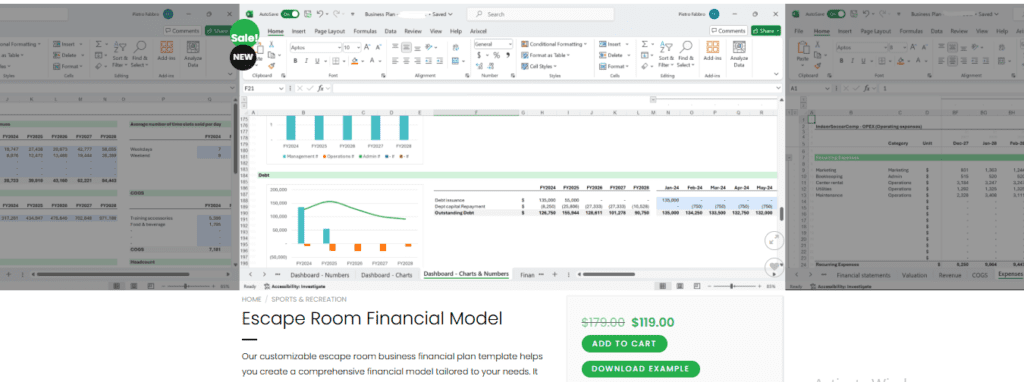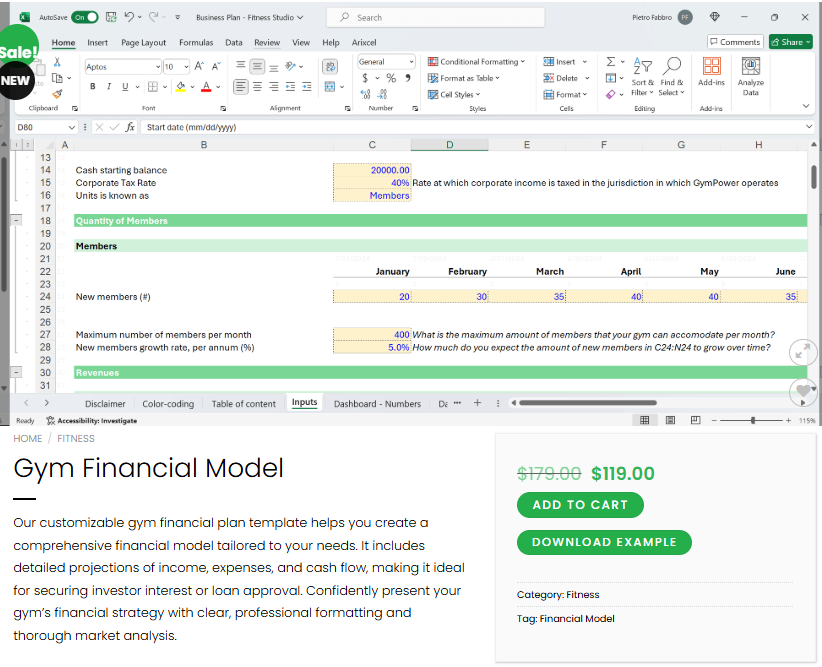Paintball-Unternehmen sind zwar als Freizeitaktivitäten beliebt, haben aber mit hohen Fixkosten, ungleichmäßigen Nachfragezyklen und einem fragmentierten Wettbewerbsumfeld zu kämpfen. Viele Betreiber unterschätzen die Kapitalintensität und verlassen sich zu sehr auf den Wochenendverkehr, was zu geringer Anlagenauslastung und volatilen Margen führt. Ein strukturiertes Geschäftsmodell – basierend auf strategischer Vermögensallokation, diversifizierten Einnahmen und disziplinierter Kostenkontrolle – ist unerlässlich, um
Kategorie-Archive: Financial Models
Erstellen, Analysieren und Optimieren von Finanzmodellen für Unternehmen und Investitionen.
Die Lasertag-Branche bewegt sich an der Schnittstelle zwischen ortsbezogener Unterhaltung und erlebnisorientierter Verbrauchernachfrage. Trotz ihrer Attraktivität ist die Rentabilität der einzelnen Betreiber aufgrund fragmentierter Umsetzung, schlechter Anlagenauslastung und undifferenzierter Umsatzstrategien uneinheitlich. Ein gut strukturiertes Geschäftsmodell – basierend auf Kapitaldisziplin, Umsatzoptimierung und Kostenkontrolle – ist unerlässlich, um in diesem investitionsintensiven Segment nachhaltige Erträge zu erzielen.
Landscaping is a volume-driven, labor-intensive service business with high local demand and repeatable revenue. While single jobs can be profitable, sustainable success comes from recurring contracts, crew utilization, and seasonal service layering. The market is fragmented and competitive, but operators who systematize client acquisition, route efficiency, and upsell logic outperform peers significantly. Asset Configuration CapEx
Padel clubs operate in a fast-growing recreational segment that blends social sport, fitness, and community-driven engagement. With low skill-barrier, high frequency potential, and strong group appeal, demand is rising across Europe, Latin America, and increasingly North America. However, profitability is determined not by court count but by utilization rates, multi-revenue layering, and structured member retention.
Carpet cleaning is a high-margin, asset-light field service business with strong demand across residential and commercial markets. While pricing is competitive, profitability is unlocked through route density, recurring contracts, and multi-surface upsells (e.g., upholstery, tile, rugs). Most operators underprice or rely on one-off jobs; scalable operations require structured booking, technician productivity, and high-ticket bundling. Asset
Escape rooms operate in a fixed-capacity, appointment-based entertainment niche where revenue is generated by selling immersive, time-bound group experiences. The business model is capital intensive but offers high margins once occupancy is optimized. Profitability is constrained by physical throughput and therefore, operators must focus on room utilization, group size maximization, and multi-revenue layering through events,
Bowling alleys operate in a high-capacity, group-driven entertainment model with built-in throughput and wide demographic appeal. While lanes are the core asset, profitability is driven by food & beverage (F&B) margins, league retention, and event monetization. Many alleys suffer from underutilized space or outdated formats—successful operators treat bowling as a platform for multi-spend experiences, not
CrossFit gyms operate in a niche, high-intensity segment of the fitness market with loyal communities and consistent attendance cycles. The model combines structured programming, small-group coaching, and community engagement to drive retention and pricing power. While class capacity is limited, profitability is driven by high average revenue per member (ARPM), coach utilization, and semi-fixed cost
Rock climbing gyms operate at the intersection of sport, lifestyle, and community, combining elements of fitness, challenge, and social interaction. While build-out is capital-intensive, profitability hinges on wall utilization, membership retention, and programmed monetization (instruction, events, youth programs). Most gyms face high fixed costs, but those that structure operations for throughput, coaching revenue, and retail
Die Fitnessbranche bietet hohe Umsatzchancen, ist aber nach wie vor betrieblich komplex. Zwar ist die Nachfrage nach Fitnessstudio-Mitgliedschaften weiterhin hoch, doch die Rentabilität wird oft durch hohe Fixkosten, Mitgliederfluktuation und wettbewerbsintensive Preise beeinträchtigt. Ein strukturiertes Geschäftsmodell ist unerlässlich, um nachhaltige Margen zu erzielen. Anlagenkonfiguration: Fitnessstudios erfordern erhebliche Vorabinvestitionen in Immobilien, Ausstattung und Innenausstattung.












